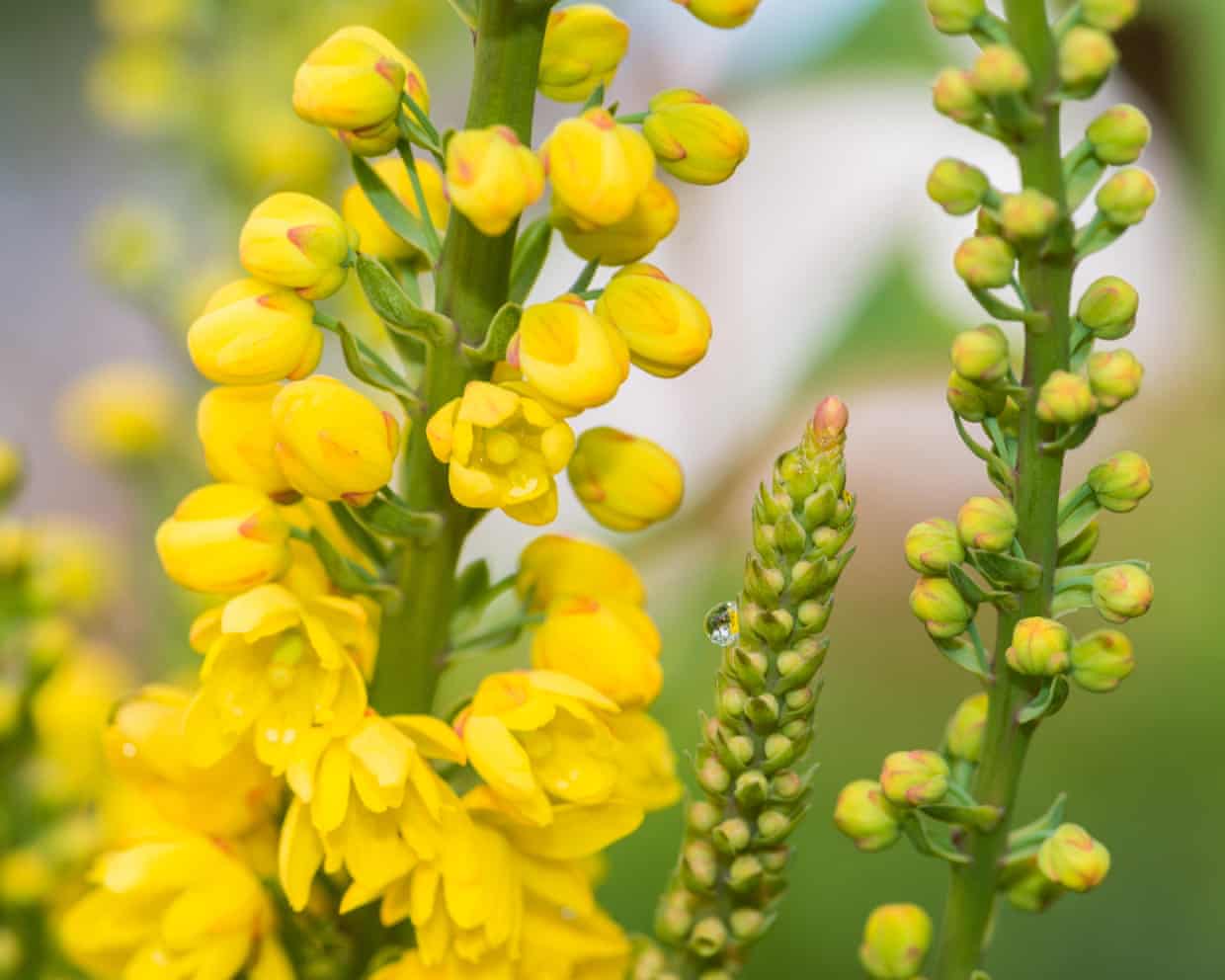Science
Flowers Employ Unique Mechanisms to Ensure Effective Pollination

Recent research highlights the intricate and often surprising behaviors of flowers, particularly focusing on their male reproductive parts known as stamens. Various plant species have evolved touch-sensitive mechanisms that facilitate more effective pollination by interacting dynamically with visiting insects. This fascinating interplay ensures that these plants maximize their reproductive success.
One notable example is the interaction between insects and the flowers of Berberis and Mahonia. When these flowers are visited in search of nectar, their stamens spring into action, bending over to release pollen. This mechanism results in a sudden smearing of pollen onto the unsuspecting insect’s face or tongue. This unexpected encounter often leads to a hasty exit by the insect, minimizing the time spent at the flower and conserving the plant’s valuable nectar and pollen. The insect then carries the pollen to another flower, facilitating cross-pollination as it brushes against the receptive female organs.
The Catasetum orchid presents an even more aggressive strategy. When an insect lands on its flower, it is met with a rapid discharge of sticky pollen bags that can knock the insect away. This forceful action ensures that the pollen adheres to the insect, which then transfers it to other flowers, thereby encouraging genetic diversity among plants.
Another fascinating example is found in the Stylidium species, commonly known as triggerplants, native to Australia. These flowers possess a unique club-shaped organ that reacts to touch. Upon contact, the organ swings through a complete 180 degrees in an astonishingly quick time of just 10 milliseconds. This swift movement not only delivers pollen to the visiting insect but also collects any pollen the insect may already be carrying. After this brief but intense interaction, the triggerplant resets quickly, preparing for the next pollinator.
These examples underscore the remarkable adaptations of flowering plants to enhance their reproductive processes. By engaging pollinators through innovative mechanisms, these plants not only ensure their survival but also contribute significantly to the broader ecosystem, including the vital role of cross-pollination in maintaining biodiversity.
-

 Science2 months ago
Science2 months agoToyoake City Proposes Daily Two-Hour Smartphone Use Limit
-

 Health2 months ago
Health2 months agoB.C. Review Reveals Urgent Need for Rare-Disease Drug Reforms
-

 Top Stories2 months ago
Top Stories2 months agoPedestrian Fatally Injured in Esquimalt Collision on August 14
-

 Technology2 months ago
Technology2 months agoDark Adventure Game “Bye Sweet Carole” Set for October Release
-

 World2 months ago
World2 months agoJimmy Lai’s Defense Challenges Charges Under National Security Law
-

 Technology2 months ago
Technology2 months agoKonami Revives Iconic Metal Gear Solid Delta Ahead of Release
-

 Technology2 months ago
Technology2 months agoSnapmaker U1 Color 3D Printer Redefines Speed and Sustainability
-

 Technology2 months ago
Technology2 months agoAION Folding Knife: Redefining EDC Design with Premium Materials
-

 Technology2 months ago
Technology2 months agoSolve Today’s Wordle Challenge: Hints and Answer for August 19
-

 Business2 months ago
Business2 months agoGordon Murray Automotive Unveils S1 LM and Le Mans GTR at Monterey
-

 Lifestyle2 months ago
Lifestyle2 months agoVictoria’s Pop-Up Shop Shines Light on B.C.’s Wolf Cull
-

 Technology2 months ago
Technology2 months agoApple Expands Self-Service Repair Program to Canada









